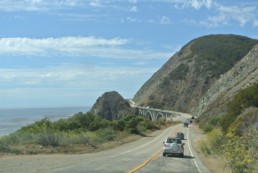Farm or Fossil: The Battle for the RFS Rages On
There is a war being waged between farmers and oilmen impacting everything from the price of corn to the price you pay for gas at the pump.
By Brentan Alexander, PhD, Chief Science Officer & Chief Commercial Officer
For those of us following biofuels, there was an interesting bit of news last week that barely registered in the press outside of Houston and Des Moines: A U.S. Court of Appeals in Denver handed down a ruling forcing the U.S. Environmental Protection Agency (EPA) to re-examine three small-refinery exemptions granted for the 2016 compliance year within the Renewable Fuel Standard (RFS) regulation. You’d be forgiven for thinking that this ruling impacts something esoteric with limited impact on your daily life. Few Americans know about the RFS at the heart of this court battle, but there is a war being waged over this law between farmers and oilmen. It’s an intraparty slugfest pitting longtime allies against each other and impacting everything from the price of corn to the price you pay for gas at the pump.
Some background: The RFS was adopted in the mid 2000s, with the price of oil spiking and unrest in the Middle East causing concerns at home about domestic energy security. The name of the legislation enshrining the standard in law, the Energy Independence and Security Act of 2007, left little doubt to the motivations behind the policy: The law was written to jumpstart domestic biofuels production to help lessen America’s addiction on foreign oil. Signed by an oil state Republican, the law passed with just eight ‘no’ votes in the Senate. Republicans and Democrats alike cheered as this comprehensive program to support renewable biofuels became the law of the land.
U.S. farmers, primarily in midwestern states with a history of voting red, cheered as well. The program set mandates for the production of multiple biofuels, but primarily focused on ethanol and biodiesel, which are made from corn. Although more expensive per unit of energy than their fossil brethren, these fuels were literally home-grown, and the RFS supported their use by mandating blend volumes of biofuels in the U.S. fuel supply. With this mandate to refiners in place, corn prices surged, investments flowed to midwestern states, and an entire economy built around ethanol production was born. U.S. ethanol production rose from 1.63 billion gallons in 2000 to 13.5 billion gallons in 2010 and continued to grow from there as the U.S. Department of Energy (DOE) increased the blending mandate every year through 2018.
The program, however, was disliked by the oil companies, as it required building the infrastructure necessary to incorporate this new feedstock into their products. This new feedstock was also generally more expensive, raising prices for downstream consumers. To help lessen the blow, the RFS included some carvouts for the oil and gas industry. In particular, small refiners, concerned about their ability to afford necessary plant upgrades to compete with larger competitors under the mandate, were provided a pathway to secure waivers to the mandate. As drafted, the legislation required the DOE to account for the volumes lost from these waivers when setting annual targets, effectively shifting the obligations from the little guys to the big guys. Few waivers were granted, and large oil and gas companies, despite continued lobbying against the program, generally fell in line and followed the program requirements.
And then came President Trump. Unaware of the delicate politics involved, the Trump Administration immediately upon arrival began undermining the program. The number of waivers granted skyrocketed from under 10 to over 30 in two years. Large refineries, never intended to be excluded from the program, were given waivers as well. And the DOE, when setting its mandates, ignored the missing gallons, effectively reducing demand for biofuels by billions of gallons with the stroke of a pen.
The Trump Administration is generally unconcerned about public blowback to its various deregulation activities, but in this case their actions didn’t just #OwnTheLibs, they triggered midwestern Republicans by undermining a significant portion of their economy. Chuck Grassley (R-IA) noted that the EPA “screwed us.” The powerful farmer’s lobby unloaded on members of Congress and administration officials alike.
Quite accidentally, Trump found himself under attack from his right flank. A full blown crisis was born, no environmentalist lobby needed. Looking to find a compromise with Big Ag and Big Oil, the Administration spent the fall providing promises to both sides and promptly undermining their own efforts. Trump promised farmers at least 15 billion gallons of ethanol mandates for 2020, much to farmers’ relief. Oil groups complained bitterly about Trump reneging on his deregulation promises. When the EPA released the associated rule, it failed to live up to the hype; agricultural groups were incensed as farmers spoke openly of betrayal and deceit.
Which brings us to the news of last week from a quiet courthouse in Colorado. In its ruling, the Court of Appeals found that the language of the RFS required waivers to be granted only as an extension of waivers granted prior to 2010. Such an interpretation could have profound impacts on the waivers granted under Trump, most of which had no precedent before his time in office. If upheld on appeal (and given this ruling came from an appeals court, it would seem the remaining path for re-review is limited), this decision would open the door to widespread invalidation of the waivers granted under Trump. Such a decision would be highly impactful because it would solidify the foundations of the RFS program, severely curtailing the ability of the White House to undermine the program, and would ultimately be a big win for Big Ag.
It’s just the latest battle in this ongoing war. With billions of dollars and federal elections at stake, expect more shots to be fired. Get your (pop)corn ready.
###
Sustainable Aviation Fuels: Ready for Takeoff
Major Airlines are Committing to Sustainable Aviation Fuels, but Could be Doing Much More
By Brentan Alexander, PhD, Chief Science Officer & Chief Commercial Officer
The last five years have been busy ones in the sustainable aviation fuel (SAF) industry: Major airlines are making investments in SAF projects designed to lower greenhouse gas emissions. United put up $30M to invest in biofuels pioneer and NER client Fulcrum BioEnergy, Delta committed to purchase 10M gallons of renewable jet fuel annually from Gevo on top of $2M invested elsewhere, Southwest signed up for 3M gallons per year from Red Rock Biofuels, and Qantas announced AU$50M over the next 10 years to jumpstart the SAF industry as a whole.
Why the interest? They see the writing on the wall: With aviation representing over 12% of global transport CO2 emissions, and growing each year, flyers are reporting that climate concerns are leading them to fly less, take years off from flying, or stop flying altogether. Examples abound, like the climate activist Greta Thunberg who publicly opted to take a boat to the UN rather than fly. Without action, airlines will see their customers flee, governments intervene, or both.
SAFs, which are less carbon intensive than their petroleum-based counterparts, represent a promising solution for the airlines. How? They utilize next-generation technologies, literally turning wastes, including household trash and agricultural byproducts, into renewable transport fuels. These fuels, on a full lifecycle basis, emit a small fraction of the CO2 as compared to fossil-derived fuels, significantly reducing the carbon footprint of the flying public.
The investments so far from the airlines are a step in the right direction, but reducing airline emissions will take a significantly larger commitment. $30M from United to support Fulcrum is good, but Fulcrum’s next plant will take an order of magnitude more capital to build, and the 33M gallons of fuel it will produce annually is just 0.2% of the 18B gallons of fuels U.S. airlines consumed in 2018. Delta’s 10M gallon commitment to Gevo is a similar fraction of a percent of overall demand. Airlines surely don’t (and shouldn’t) need to be the sole financing source for all the capital necessary to help SAFs reach scale, but a serious increase of investment would multiply the number of projects coming to market and start making a real dent.
Airlines should be stepping up because it’s also smart business. Direct investment in SAFs is a natural hedge against fuel costs. As fuel prices rise, producers sell SAFs to the airlines and simultaneously generate revenue for the airlines as investors, offsetting those increasing costs. And purchase agreement promises are low-risk offerings: If SAF projects fail to deliver, the airline has no obligation or exposure, but if they succeed, airlines get low-impact fuels (likely at a discount to the market), and a PR heyday. Fliers also want it: I recently shared the stage at VERGE 2019 with Sean Newsum, director of environmental strategy for Boeing, who spoke about the Fortune 500 customers whose employees fly many millions of miles annually but would love to fly on SAFs to reduce their organization’s carbon footprint (of which business travel is typically the largest contributor).
These SAF investments also turn out to work. Long-term jet fuel purchase contracts from strategic partners like Delta and Southwest are instrumental in convincing other capital providers to invest in the construction of next-generation SAF projects, which in turn allows the projects to scale up and better serve the aviation industry (and others). Direct equity investments, as with United and Fulcrum, are even more impactful in moving projects forward, and strategic partnerships further validate new businesses and models to traditional financiers.
It’s significantly more impactful than the other path airlines have chosen: purchased offsets to counteract their emissions. From JetBlue to Air France, airlines worldwide are tripping over each other to announce full carbon-offsetting for their flights. These offsets, however, have a troubled relationship with actual impact. Offsets are a dereliction of duty that do little to address the underlying emissions issue, and are therefore unlikely to placate activists and governments looking to limit overall emissions. To truly address emissions head on, airlines should continue to grow the investments and commitments they have started to make in SAFs.
SAF investments by airlines represent a significant vote of confidence in next-generation technology, which directly reduces the carbon intensity of the industry, no offsets needed. Pie in the sky? Perhaps. But the industry best placed to reach for the stars is the one that lives life at 30,000 feet.
###
Interview: Erin Lynch, President of Beecher Carlson’s Global Energy Practice
We are inspired by people who are passionate about technology that solves pressing global challenges. Scaling and commercializing those solutions requires serious knowledge, courage, perseverance, and support systems like those who work in the insurance industry. In this interview series, our chief actuary, Sherry Huang, talks with friends of NER whose work makes a difference, and whose journeys will inspire you, too.
This interview has been lightly edited for clarity.
Beecher Carlson is a large account risk management insurance broker. Erin Lynch is the president of their Global Energy Practice, leading a team of experienced brokers and risk management specialists. I first met Erin at a client visit and was impressed by her professionalism and down-to-earth demeanor. I wanted to learn more about what it takes to be a successful insurance broker and practice leader, and her view on how diversity and inclusion helps Beecher build a successful team.

Erin, let’s start with how you got to where you are today. Tell us more about your journey to become an insurance broker and leader in the energy insurance space.
I started my career as a sports journalist, having studied journalism at the University of Oregon. I pursued sports journalism because it combines my passion for sports and writing. A few years after my career as a broadcast journalist, I started looking for a new opportunity that didn’t involve getting up at 3:00 in the morning. A friend of mine introduced me to a senior leader at the local Willis Towers Watson office. I interviewed and was given the opportunity to become a producer. That senior leader was my earliest mentor in the insurance industry – he encouraged me to specialize and to look beyond the regional market. After a year and a half, that Willis office closed and I joined Beecher Carlson. At Beecher, I aligned myself with the west coast energy practice, became more technical, and created a niche expertise for myself. The senior leadership at Beecher Carlson has been incredibly supportive, and I was fortunate to have the opportunity to develop and lead our energy practice and work with a team of brilliant colleagues.
For an audience unfamiliar with the broker’s role in the insurance industry, can you describe what you do? What's the best and worst part of your job?
Brokers handle both traditional insurance policy transactions as well as provide risk-advisory services. Over the years, the risk-advisory consultative service portion has become a significant part of our business. We partner with clients to identify, quantify, mitigate, and transfer risk. Some of our work involves diligence and helping renewable projects get built.
The best part of my job is working with a bright, dedicated team and having a supportive executive team. We have a common motivation to serve clients in this changing environment. The double-edged sword of my job is that I am on an airplane all the time.
Beecher Carlson’s energy practice has grown over the years and has a diverse team in terms of capability, backgrounds, and gender. How have you seen the role of women change in the industry during your tenure? Are there any unique advantages or challenges to being a woman insurance broker in the energy space?
In my tenure in the industry, I have observed the tide shifting towards a more diverse set of candidates entering and excelling in the industry. I remember when I first moved from journalism to insurance, I was surprised to find how few women were on the senior team. I am especially grateful for Beecher’s CEO and executive team for creating an incredibly inclusive environment. I think men and women bring different strengths and perspectives and having a diverse team challenges us to be more successful. In addition to our experience in the energy market space, I like to think our diverse team is also attractive to our buyers.
As a woman leader, I can easily relate to and appreciate the challenges of being a young mom and a professional, having experienced that journey myself. It’s a priority for me to build long-term partnerships with my teammates and create a flexible, supportive environment.
But we still have a lot of work to do. I am part of the Young Presidents’ Organization and in our regional chapter only 10% of the participants are women. I am involved in various forums to brainstorm ideas on how to support more women leaders.
On a more personal note, are you still passionate about sports? What is your favorite weekend activity?
I am passionate about the outdoors; with my free time I love to go hiking, running, golfing or camping with my family. Every year, a group of girlfriends and I hike a new section of the Pacific Crest Trail.
Thank you, Erin!
###
Dark Thoughts: Solar is Useless for Ice Cream Lovers
NER’s CSO & CCO, Brentan Alexander, reflects on northern California’s “Public Safety Power Shutoffs” occurring this fire season. Because, you heard that right, California now has a fire season.
The most surprising thing about this power outage is how loud it is. As I write this, Pacific Gas and Electric Company (PG&E) has temporarily turned off the power to as many as 3 million people across northern California, and the sound of countless consumer-grade gasoline generators is echoing throughout the valley. You’ve likely heard about PG&E’s actions since it made international headlines (to offer just a sample from The Guardian, The Economist, and Financial Times). The effect is being acutely felt by the NER team; we all live within the PG&E service territory.
For myself, that means I’m on hour 30 without a utility hookup. My garage door is stuck, laundry is piling up, and I’m reminding myself not to open the freezer by applying tape to the handle with the words ‘DO NOT OPEN’ scribbled in sharpie. It’s a failing strategy: I’ve accidentally peeked inside twice. But I’m not in the dark. Outside, my 15-year old Toyota Prius with 150,000 miles is happily running a small DC-AC inverter, kicking on the engine as needed to keep the battery topped up, and providing the house with lights, a few working outlets, and power for the internet.
It’s an absurd situation, but one I’m reasonably well equipped to understand and handle. Working in the insurance industry where I think often about risk makes me wonder if these shut offs are really helping reduce fire risk, or just reducing PG&E’s exposure. On the one hand, the vast majority of large fires in California over the last few years have been caused by utility equipment (burning over a half-million acres since 2000). De-energizing lines surely reduces the risk of utility-sparked fires dramatically. And yet, there are now a large number of generators in operation, each manually filled from gas canisters. How many of these systems are properly wired to the house and up to code? (My Macgyver Prius generator sure isn’t.) A common solution to a lack of electric lights is also to literally light fires, albeit small controlled ones (ok: candles). Surely the uptick in candle usage increases the risk of an accidental fire. And then there’s the separate issues of deaths caused by offline medical equipment, or the loss of phone power to report other local emergencies. I have yet to see a detailed analysis of this risk tradeoff. Perhaps it’s good to trade the risk of (A) remotely started fires in rugged terrain from large power lines with (B) fires started in populated areas (where they’re more likely, perhaps, to be caught early and extinguished?). I do not know the answers. All that is certain is that this action lowers financial risk for PG&E, on the backs of financial losses (e.g. spoiled food, lost business) of their customers.
I brought this risk tradeoff question up with a neighbor, and he quickly pivoted to a different but related point: how much reliable electricity is taken for granted and how little the average person knows about how it works and how it’s delivered. He was primarily talking about his frustrations with his solar system. Across my neighborhood, countless homes have gleaming panels on the roofs, some coupled with shiny battery packs mounted on the side of the house. All of these houses currently lack power. My neighbor simply didn’t know that solar is useless without a working electric grid, and for the folks with batteries, I doubt those owners understood that most of their inverters were not designed to island during a blackout. For my neighbor, I could sense his exasperation that this panel on his roof, which can generate electricity, somehow can’t power his home. A discussion on alternating vs. direct current, load matching, and frequency regulation was met with a blank stare and shake of the head.
My hunch is that this experience will lead more people who currently lack solar to seek to install it (especially with the imminent step-down in the investment tax credit). I wonder how many of those installs will be done with the latest generation hardware (enabling the house-sized nanogrid), and how many installs will instead be the usual setup that only allows for power when PG&E keeps the street energized.
That leads me to another question: these household systems have been built around a particular financial story; will it hold up? The utility death-spiral, wherein more and more consumers put solar on their roofs and therefore lower utility revenues—all without lower O&M costs to maintain miles and miles of utility lines—has been explained in exhaustive detail for nearly a decade. But the sudden bankruptcy of PG&E raises the distinct possibility that the current rate structure will be reshaped to ensure the financial viability of the utility while funding the repair and replacement of the ageing and failing infrastructure causing this whole mess. The more the utility bill shifts to distribution charges instead of use charges, the less the home-solar array will payoff.
For now, there are just questions and accusations. Should I point my finger at PG&E, climate change, or the inverse condemnation doctrine? (A recent article by Micheal Shellenberger broke this down well.) Does it even matter? None of that blame is going to get someone to replace my lost pint of rocky road.
###
Fattening Your Loan Life Coverage Ratio
By Matt Lucas, PhD; NER's Managing Director, Business Development
I’m a huge fan of the US Park Service’s Fat Bear Week, which features some huge bears. The bears have been fattening up all summer and fall for their long winter hibernation. This is the opposite of fat shaming—fatter is better. But truth be told, if they get too fat it’s harder for them to do, well, bear things.
You may not have jumped to the same analog as me, but hear me out: Debt is to project finance as fat is to bears. When you’re building a new facility, as many of New Energy Risk’s clients are, you’ll want some debt. Quite a lot in fact. But too much debt makes the project unwieldy. An over-leveraged project won’t be nearly as healthy looking to your cap table as the fattest of the fat bears.
We know that raising money is hard. Raising equity is especially challenging: equity is in the most junior position to receive cash flows, and equity fundraising is a more linear, incremental process than raising debt. In contrast, raising debt via a public bond offering can raise vastly more capital with similar effort. And maybe most importantly, debt has a lower cost of capital! It’s no wonder that project developers try to minimize the equity they have to raise in order to accelerate their execution timeline and improve financial returns for their existing equity investors. However, this approach can lead to projects that have too much debt instead. So how do you know what’s the right amount of debt? (You want a fat bear, not a fat bear that can’t climb!) The answer is in your loan life coverage ratio.
What’s a Loan Life Coverage Ratio (LLCR)?
An LLCR is a metric that relates available cash to debt service to the cost of the debt service. A higher number is more favorable and means your project can get fatter on debt without drawbacks, reducing the amount of equity otherwise required. A handy equation:
LLCR = [ (net present value of cash available for debt services over the life of the debt) + reserves] divided by (present value of debt)
- Cash available for debt service (CFADS) is your revenue minus operating expenses (including taxes but not including depreciation).
- The denominator of the LLCR is the present value of your debt.
- The interest rate of your debt is the discount rate used for calculating the net present value in the numerator.
A project with a LLCR equal to 1.0 is break-even: all its free cash pays its debt service. A ratio higher than 1.0 means there’s more than enough free cash flow to meet debt service.
You might have heard about a related metric, the debt service coverage ratio (DSCR). The DSCR is similar to the LLCR but is calculated on a quarterly or annual basis, so it’s a snapshot in time. In contrast, the LLCR is an average over the lifetime of the debt. For projects with lumpy free cash flows due to seasonality or infrequent-but-expensive maintenance costs, the LLCR is a more generous metric because it smooths out the cash flows.
Why the LLCR Matters
Debt lenders will use the LLCR to gauge the riskiness of your project. Of course, merely breaking even is not a compelling financial result, so the LLCR needs to significantly exceed 1.0. Below are some typical minimum LLCRs used by lenders for different projects in various industries:
| Example of Debt Lending Situation | Typical Minimum LLCR |
| Infrastructure backed by investment-grade rated government entity | 1.25 |
| Power plant whose offtake buyer is creditworthy | 1.4 |
| Oil & gas industry | 1.4 |
| Metal & mining industry | 1.4 |
| Infrastructure with merchant risk | 1.75 |
| Power plant selling on merchant market | 2.0 |
| New Energy Risk’s experience of projects that get funded and reach financial close | 1.7 |
The table makes it clear that projects with merchant risk—those that lack contracts to sell their production to a creditworthy entity—require significantly higher LLCRs.
At New Energy Risk, our experience is that deals with LLCRs of at least 1.7 are those that get investment. That higher ratio gives the debt lender confidence that even if the project technologically under-performs, or the value of the production decreases, the project will still be able to pay its debt service and make it through the long winter (whether hibernating or not).
What Can I Do If My Project’s LLCR Is Too Low?
Uh oh, your bear of a project got too fat on debt! What can you do to restore your photogenic and investment-worthy proportions?
- Consider New Energy Risk: We can help! New Energy Risk’s insurance products can enable debt funding where it was not previously possible or reduce the cost of debt. In both cases, NER’s help with coverage reduces your cost of debt and increases your LLCR.
- Reduce your cost of debt by financing in a major currency: Debt is typically cheaper when it’s denominated in major currencies, so if your project is capitalized in a minor currency, you could try denominating your project’s feedstock and production in a major currency instead.
- Reduce your cost of debt with government assistance: In the US, the federal government will provide loan guarantees for certain types of innovative capital projects. At New Energy Risk, we have worked with projects pursuing such guarantees from the US Department of Energy and US Department of Agriculture.
- Adjust your cap table to increase the relative percentage of equity: If the total project cost remains fixed, then reducing the portion of the cost capitalized as debt will reduce your debt service and increase your LLCR.
- Reduce project capital costs: If you can simplify your project to reduce its capital cost without reducing revenue, that will raise your LLCR. For example, you might find that a captive, on-site system for over-the-fence procurement can shift costs from capital to operating expenses and save money on a levelized basis.
- Reduce operating expenses: If you can reduce operating expenses while holding revenues constant, that will increase free cash flow and increase your LLCR. Maybe the project can be situated in a lower-cost location. Maybe automation can reduce on-site labor costs. You might also try to contract your feedstock costs for a fixed or capped price to reduce the risk of escalating operating expenses.
- Contract your revenues: Lenders will discount your revenue if they feel it’s uncertain. Selling your production to an investment-grade entity for a fixed price or on a take-or-pay basis will help assure you get more fully credited for all your revenues.
So fatten your bear of a project with debt, but not too much; keep the LLCR in mind! Have questions about your own LLCR or project finance? Reach out to us at [email protected]. We’re here and happy to help. (Although we don’t accept salmon for payment, sorry.)
Interview: Jay Schabel, President of Brightmark Energy Plastics Division
We are inspired by people who are passionate about technology that solves pressing global challenges. Scaling and commercializing those solutions requires serious knowledge, courage, support, and perseverance. In this interview series, our chief actuary, Sherry Huang, talks with friends of NER who demonstrate these qualities professionally and personally, and whose journeys will inspire you, too.
NER worked closely with RES Polyflow to ensure the cost-effective capitalization of its plastics waste-to-value facility in Ashland, IN, USA. Brightmark Energy acquired a majority stake in RES Polyflow in November 2018. This interview has been lightly edited for length and clarity.
Jay is a calm, wise, and thoughtful business leader and technology entrepreneur. Before we first met, I joined a conference call for which I hadn’t yet received background information. Although he was leading the discussion and I had not initially been invited, unprompted, Jay sent me the files that I needed to get up to speed. It was a small act of kindness, which made an everlasting impression, and I knew then that RES Polyflow was in good hands.

Jay, let’s start with how you got to where you are today. You have vast engineering and construction management experience. Tell us about how you started your own businesses and how that took you to Brightmark Energy today?
I always knew I would start my own business. My father owned a successful trucking company, and I wanted the same experience of creating something. I launched my first start-up on January 1, 2000: a technology company that makes metal injection molding machines. That company is still operating and profitable today! I sold it when I bought another company in the automobile industry with some friends. In the next eight years, I bought and sold various companies, building up to an organization with $300M in revenue before selling my interest to my partners in 2008. This process of buying, building, and selling businesses provided great training for my work with RES Polyflow. I started on the plastic conversion technology in 2008. It was originally known as Polyflow until we added ‘Renewable Energy Solutions.’ Since our acquisition, we are Brightmark Energy Plastics Division, and we are still thinking of a name for the core technology.
Brightmark Energy Plastics Division is providing an important technology solution that turns post-use plastic into valuable products, and this reduces the amount of waste that would otherwise end up in a landfill or the ocean. Looking forward five to 10 years, what is your vision for this technology?
We want to divert 8M tons of plastic waste from landfill and waterways by 2025 and are already working on initiatives to support this goal. (Editor’s note: The Ocean Conservancy estimates that 275M tons of plastic waste is produced every year, of which 8M tons enter the oceans annually.)
What are some trends you are seeing in your industry? How do you see your industry changing and evolving?
The goal of our industry is to figure out how we can help divert as much plastic waste as possible from landfill and waterways. Recyclers are struggling to figure out what to do since China and southeast Asian countries stopped accepting used plastic from foreign countries. We want to use our disruptive technology to help manage this change and solve this plastic waste pollution problem.
Others have been working on this issue for a while, too. For example, Dow Chemical along with its partners have tested two “Hefty Energy Bag” programs in Omaha, Nebraska and Citrus Heights, California. They collected previously non-recycled plastics and converted them into valuable products, demonstrating that recovery of non-recycled plastics is a viable municipal process.
What advice do you have for technology entrepreneurs who are trying to start or scale their business?
Be honest with yourself. At RES Polyflow, we determined that we needed a significant level of scale in order to be economically viable, but that created a difficult financing task. The insurance solution from NER and AXA XL was critical in completing the debt financing. The required level of financing was a big pill to swallow, but at the end it was beneficial. Make the tough decision early and stick with it.
Lastly, I understand you used to own and operate a winery, which is almost as exciting as reducing waste and pollution for planet Earth! Outside of Brightmark Energy, what are you up to now?
Yes, my wife and I used to own three acres of grapes. We made our own wine and operated a winery, but it became too much while I traveled a lot for RES Polyflow so we sold it a while ago. Now we are building our dream home. We are having the time of our lives!
Thank you, Jay!
About the Plastics Renewal Facility in Ashley, Indiana

Brightmark Energy’s plastics-to-fuel pyrolysis process sustainably recycles plastic waste directly into useful products like fuels and wax. The plastics renewal facility, now under construction, will convert 100K tons of plastic into 18M gallons of fuel and 6M gallons of wax annually. To finance this deployment, RES Polyflow and Brightmark Energy raised an aggregate $260M including $185M in Indiana green bonds, underwritten by Goldman Sachs & Co.
###
A Plan B for Air Quality
By Brentan Alexander, Chief Science Officer & Chief Commercial Officer
News broke recently that the U.S. Environmental Protection Agency and Department of Transportation would jointly be moving to revoke the waiver that California has used to set stricter auto emissions than the U.S. government. The only shock was that the action had taken so long to materialize. Long a leader in environmental protection, California put rules and procedures in place to manage air pollution before the Feds caught up with the Clean Air Act of 1970. California was awarded for its foresight: the bill enshrined a pathway for California to maintain continued dominion over its air through a waiver process. The Trump administration's decision to rescind that special position was the least surprising development in the long running feud between Trump and the Golden State. As the news exploded across the newswire and prompted to-be-expected reactions from both sides in the twitterverse, I felt a smirk come across my face... Trump may be claiming victory (possibly prematurely!), but California has the upper hand in this war.
The stricter auto emissions standards currently under attack are just one quiver in use by California and its allies in the fight to reduce carbon emissions. Another tool in the arsenal, the Low Carbon Fuel Standard (LCFS), is proving to be equally powerful and, more importantly, durable. But for all the attention that our national media is heaping on the auto-emissions waiver, few are aware of the LCFS program or the work it is doing to enable a cleaner future.
LCFS is a state-run program enacted in 2006 under Governor Schwarzenegger through AB32 that is administered by the California Air Resources Board. Adopted in 2009 and implemented in 2011, the regulations underpinning LCFS require the producers of refined road-ready fuels to reduce the “carbon intensity” of their fuels, with ratcheting targets that continually require further reductions year-over-year. Using a scientifically-derived and technology-neutral process, the LCFS program awards credits to fuel producers who make liquid fuels that produce less CO2 (or CO2-equivalents) over their lifecycle, as compared to conventional methods. These fuels, which are less carbon intensive, lower the total CO2 emitted by the transportation sector when blended into the fuel stock. Fuel producers can reach their mandated carbon-intensity through new technologies and processes, or by buying LCFS credits from third-parties with more efficient processes in place.
The beauty of the LCFS regime is that it does not pick winners or losers. Unlike the investment and production tax credits that have helped wind and solar run down the cost curve and compete without subsidy, the LCFS program is not technology specific. Any method that produces a cleaner gallon of fuel (so long as it’s sold in California) or that sequesters CO2 is eligible for credits under the program. May the best technological solution win!
Can you make a biofuel from plants or plant wastes? You qualify for credits since a portion of the carbon is non-fossil. Can you pull CO2 out of the air and bury it underground? That process is carbon negative and you qualify for LCFS credits, as well. Did you build a solar farm that will be used to power EVs? Congrats, have some credits. As the carbon-intensity target under LCFS rules gets stricter over time, producers must create even more climate-friendly fuels or buy still more credits to compensate for their conventional fossil products, which increases the demand for cleaner solutions and supports the price of the credit.
So, how is this program working? LCFS is the major driver of revenue for several innovative, first-of-a-kind facilities being built around the United States right now. Without this subsidy, these projects would not be economically viable; as with wind and solar, the LCFS program is helping these technologies get to market, and their success at scale will help reduce prices and further enhance the economics of alternative fuel sources. Meanwhile, investors are stepping up to support these projects, assuming the risk that future LCFS prices will remain stable and attractive. Their confidence is well-founded: generators of LCFS credits today are banking a portion of their credits for future years, betting that future prices will be higher than today and justifying a ‘hold’ approach on the asset. Billions of dollars of credits now sit unused in savings, waiting for a future where their value is even greater. Other regions have taken notice of this success, and proposals to replicate California’s system are gaining traction in the Pacific Northwest and Canada. The demand for credits is expected to grow substantially over the next decade as more states come online with their own programs.
The great irony for the Trump administration, and all those fighting against California’s clean-air waiver, is that if they “succeed” and auto fuel-economy stagnates, the resulting increased demand for liquid fuels will further enhance the value of the LCFS credit. This provides more financial incentive for new technologies and developers to enter the space and reduce the carbon footprint of transportation fuels. Perhaps this is not the shortest route to decarbonizing the transportation sector, but it’s not a bad Plan B. When it comes to the future of carbon, California is playing for keeps.
##
No, we’re not running out of Helium
No, We’re Not Running Out of Helium
By Brentan Alexander, CSO & COO
I’m often frustrated when reading science coverage in the national press. There are often a number of inaccuracies and misleading narratives that are routinely embedded in the stories that seem to get picked up by a wide variety of outlets. Seeking a catchy headline or narrative, the articles often distort the science and draw erroneous conclusions (which makes me wonder, are all the articles in these papers where I have less insight and background as poorly researched?). The latest piece to draw my ire?
From Forbes: Humanity Is Thoughtlessly Wasting An Essential, Non-Renewable Resource: Helium
Reading the article, you are led to believe a few things: We waste a huge amount of helium every year, that party balloons and other extravagances are the primary culprit, that once lost to the atmosphere the helium is gone forever because *SPACE*, and that we are running out of helium which will shutdown portions of medicine and science.
WELL….NO.
Let’s start from the top. Do we waste helium? This really depends on what one means by ‘wasting’, but in a simple sense, yes…nearly all the helium we use is done in a one-time fashion that is then released to the atmosphere. Balloons are obvious, but use of helium in MRIs and superconducting magnets also allows for the escape of the helium. The article fails to explain WHY we do this though….and to me it’s pretty obvious. Helium is cheap! Capturing and recycling that helium from MRI machines and other uses just doesn’t make financial sense (or hasn’t in the past)…its cheaper to just let it go and go buy more. That balance may be changing, which is, quite simply, economics at work. We waste because we can.
OK you say, but we are still losing vast quantities of helium from balloons! We can’t possibly recycle that. The article notes that filling party balloons is the single most common use of helium, and quickly works to ruin our fun. What the article fails to note is that by volume party balloons are basically a rounding error in overall helium use. No less of an authority then the National Research Council makes this point. Right there in chapter 6 of this report is an investigation of helium uses. Party balloons? They are less than 40 MMscf a year, or less than 2% of usage in the U.S. Balloons aren’t our problem, so keep on partying .
But even that is a bad idea, you say, because that helium, once released, will just escape our earth and end up…in SPACE! This is my favorite part of this story, and why I think it keeps popping up in the popular press (seriously, just google ‘helium shortage’ and you’ll find dozens of articles over the last decade like this Forbes article). It’s just such a good visual, all that wasted helium drifting up, up, and away, never to be heard from again.
I call BS. Let’s run some numbers. First, helium loss from the upper reaches of our atmosphere is a real phenomenon, with the solar wind blowing the stuff away (we lose hydrogen that way too). How much do we lose? About 50g per second. That is less than 3% of our consumption rate (see my math here). So we are adding helium to our atmosphere far faster than it is being lost to space. It’s not being lost forever, it’s just being mixed in to our air. And what to the argument that the increase in helium in our atmosphere will increase the loss to space? Not much to that really…our annual consumption is just 0.00001% of the volume of He in the atmosphere today!
Which gets to the last argument this article makes: we’re running out of Helium. Nope. Take the number above and invert it….in our atmosphere alone we have something like 6–8 million years of supply at current consumption rates. And that ignores all the helium still in the ground.
SO YOU’RE SAYING THERE ISN’T A PROBLEM?
Not quite…we do have periodic helium shortages (there have been 3 in the last 15 years). But this is fundamentally a supply/demand issue (and public policy too…the sale of the U.S. Helium Reserve, which previously was a government program to maintain helium supply, is also messing with the market) that comes back to price. There is plenty of helium in the world: whether you want to build more infrastructure to grab it from more natural gas wells (our current helium source) where it is otherwise released, or whether you want to build a plant to separate it from the air (unlikely to be very competitive against natural gas separation for a very long time) is simply a question of how much you’re willing to pay to get at it.
This indeed has profound impacts on science and medicine. That MRI test may get more expensive, and those superconducting magnets will cost a lot more to cool. And that collection of colorful paw patrol adverts floating over the picnic table at your next family BBQ may cost you a few more bucks as well. But they will all still be filled with helium.
###
Bioproducts are Seeing Major Tailwinds in Renewable Tech
Bioproducts are Seeing Major Tailwinds in Renewable Tech
By Tom Dickson and Brentan Alexander
Has Silicon Valley forgotten about cleantech after failures in solar, wind and batteries? Not quite! Several new and exciting renewable technologies are coming to market. Read Tom Dickson and Brentan Alexander’s TechCrunch article on Bioproducts re Seeing Major Tailwinds in Renewable Tech. Yes, companies are learning are how to turn trash into cash.
Here’s an excerpt via TechCrunch:
Today, entrepreneurs are approaching the space head-on, and there are dozens of cutting-edge companies coming to market and breaking through with major projects and customers. Companies in the space can be divided between the developers like Fulcrum BioEnergy, Red Rock Biofuels, RES Polyflow and Envia, and the technology providers, such as TCG, TRI, Velocys and many others.
These companies are targeting a variety of waste types, including household garbage (plastics and organics), as well as agricultural waste (like wood) and livestock waste (like manure). Waste is then converted into various products, including synthetic crude oil, natural gas, electricity, refined products (from diesel to high-value waxes) and specialty chemicals.
The Attributes that Define the Increasingly Critical Data-As-A Service Industry. Data is valuable but if it “don’t make dollars it don’t make sense.”
How to Avoid Looking like Theranos when Building Breakthrough Technology
Insurance solution provides performance coverage for the output of Fulcrum’s garbage-to-fuels plant
By Dr. Brentan Alexander, Chief Science Officer, New Energy Risk
At New Energy Risk, we see many companies struggle to balance the competing needs of technology development and deployment. As with any industry, it’s a tug-of-war between the commercial imperative of demonstrating that all aspects of a technology are proven and the financial necessity of delivering product and building a revenue stream. By going to market too early, a company is likely to fail to find capital or customers. Going too late means having expended more time and money than necessary, and it’s possible the opportunity may have passed by.
Most companies have vastly different ideas for what they need to demonstrate, from a technology perspective, to reach their market. For hardware and industrial technology companies, there is little room for error because deploying at commercial scale requires raising significant capital to cover the large capex costs associated with the construction of manufacturing, processing, and energy facilities. Companies looking to self-develop projects generally need access to lower cost capital markets, primarily debt markets, to ensure project viability. Startups that sell their hardware need to scale beyond first-adopters and find big buyers with deep pockets. These markets are by definition risk-averse, with strict guidelines to ensure loans don’t go bad and capital expenditures aren’t squandered. So how much validation do new-to-the-world technologies need to convince hyper-skeptical banks and customers to lend or buy?
We’ve seen many entrepreneurs latch on to examples of irrational exuberance: with a good story and slick marketing, willing customers and investors can be found with little to no technology validation. In fact, our experience performing diligence on hundreds of capitally intensive technology companies shows the opposite: a business plan predicated on mythmaking and vaporware is a plan to fail. Technology should never appear to be a black box — financiers and customers do not want to bet on magic, despite the occasional counterexample. Rather, the path to capital involves leveraging technology testing in real-world conditions to demonstrate to others that the science and engineering are thoroughly understood and vetted.
In short: show it works in the real world and don’t fall for the Theranos trap!
Here are some of the most common mistakes in demonstrating a technology that we’ve seen erode the chances of securing financing or closing a sale:
Companies try to jump from the lab to commercial scale
Breakthrough technology companies make a mistake when they do not build pilot demonstration facilities or hardware with similar scale, features, and equipment as their end product. These companies will have a hard time convincing skeptical financiers that what they’re selling is going to work as described. In general, a per-unit scale-up of over 10x for key components of the technology will raise eyebrows and dampen enthusiasm. Exceptions can be made for proven kit from third parties, such as pumps and valving or standard operations like heat exchange. The expected duration of a test campaign is dependent on the technology and expected maintenance cycle: once-through systems or systems with independent unit operations will need less time on test than systems with recirculation loops or highly integrated systems. In general, anything less than a 100-hour test campaign is disqualifying, and more complex systems will need many times that to satisfactory demonstrate system reliability. The longer the anticipated system life or time between overhauls, the longer the test campaign to validate projected life.
Companies don’t test under real-world conditions
We also regularly see companies test their devices or facilities shielded from the real-world conditions that could significantly undercut performance of the technology. Using super-refined, ultra-pure feedstock for a new kind of biomass energy facility does not demonstrate a technology will work on the dirtier and less consistent biomass available for a commercial plant. Validating a predictive algorithm on the very data that was used to train the system, even if only a subset of the validation dataset was used in training, provides little guidance on whether the algorithm will perform on the wide variety of datasets likely to be encountered in the field. Running controlled charge/discharge tests on a battery in a specially conditioned laboratory does not validate that the battery will perform under variable loading conditions in the desert sun.
Controlled testing is useful to validate science, but real-world testing is a requirement to validate an engineered system. Take the kid gloves off, because no customer wants to be a guinea pig!
Companies declare victory too early
At any company, there is a lot of pressure to get a product out the door, into the field, and selling. The biggest believers in a new technology are also generally part of the company. This combination leads many entrepreneurs to optimistic conclusions about the status of their technology progression. In the world of breakthrough technology, this typically ends poorly. Premature declarations that an innovation is commercial-ready inevitably leads to fits and starts and brand damage that hurts long-term growth and threatens overall success. Early production units and field installs will experience unexpected troubles and failures, and companies that fail to message appropriately and do not prepare potential investors, partners, and customers for these growing pains will find their reputation damaged and expertise questioned. Moreover, large potential partners, including EPC contractors like AECOM, technology packagers like Siemens, manufacturers like Pegatron, and strategic partners like BASF, will see through the hype and avoid working with companies that do this in order to maintain their trusted status in the industry. Brand matters.
Companies skip 3rd party verification
Another unforced error in moving from testing to real-world deployment is a failure to utilize a reputable third-party expert, such as an independent engineer (IE) like Fluor, Black and Veatch, or Leidos, to validate technology readiness. Many startups attempt to skip this key step and instead rely solely on their internal work or cut-rate third-party reports from unknown sources to get to market faster, reduce consulting fees, and start generating revenue. When I see this strategy, it is an immediate red flag and dampens my enthusiasm to work with a client company. I have found that companies which lack reputable third-party validation generally are also lacking in key technology development milestones, including a lack of testing data, unreasonable scale-up expectations, poor QA/QC processes, or erroneous capex and opex assumptions. Our partners in industry have reported similar experiences. A company lacking an IE report from a reputable vendor is actually signaling to the market that it is not serious, thorough, or ready for primetime. Worse, a company sharing a poorly written report from a relatively obscure third-party will project a ruinous lack of expertise and know-how.
Trusted reports do cost real dollars, but they more than pay for themselves by cutting initial diligence time with new customers or financiers and validating technology readiness for potential partners through a recognized seal-of-approval. Most companies even learn a thing or two because the IEs have seen many failures and can identify and help mitigate potential faults and problems that could become expensive headaches later.
While it’s hard to determine the exact right time to move from technology development to deployment, avoiding the common pitfalls above will set any company apart from many competitors in the field. Although it may be appealing to take shortcuts around the time and capital needed to properly validate a breakthrough technology, most customers and investors are savvy enough to see through the charade.
After all, nobody is looking to work with the next Theranos.
##









